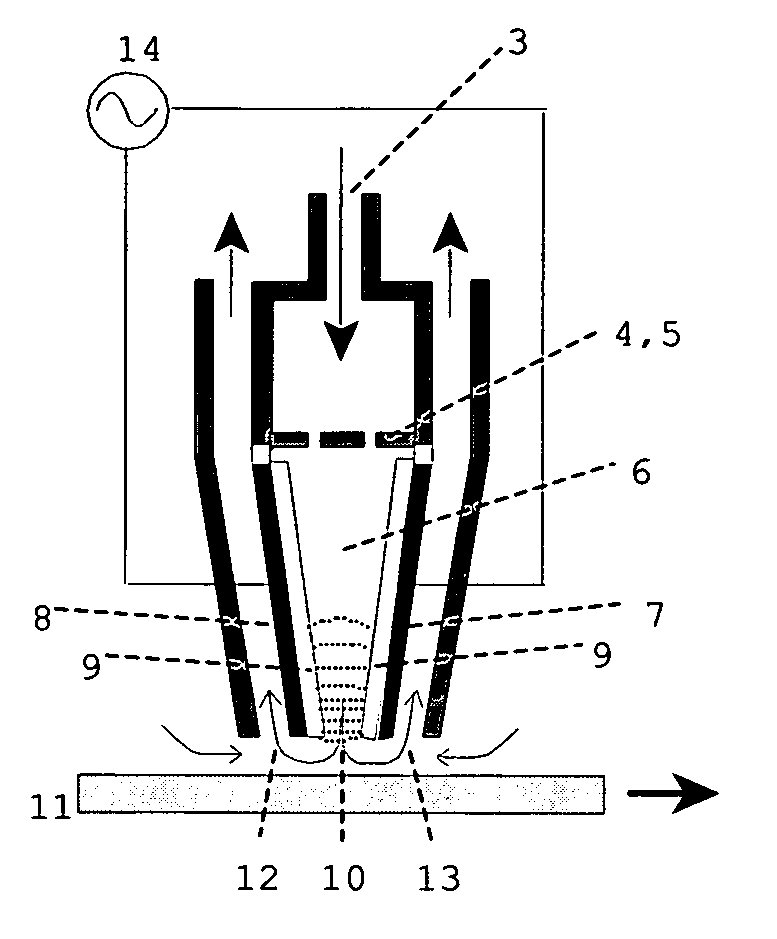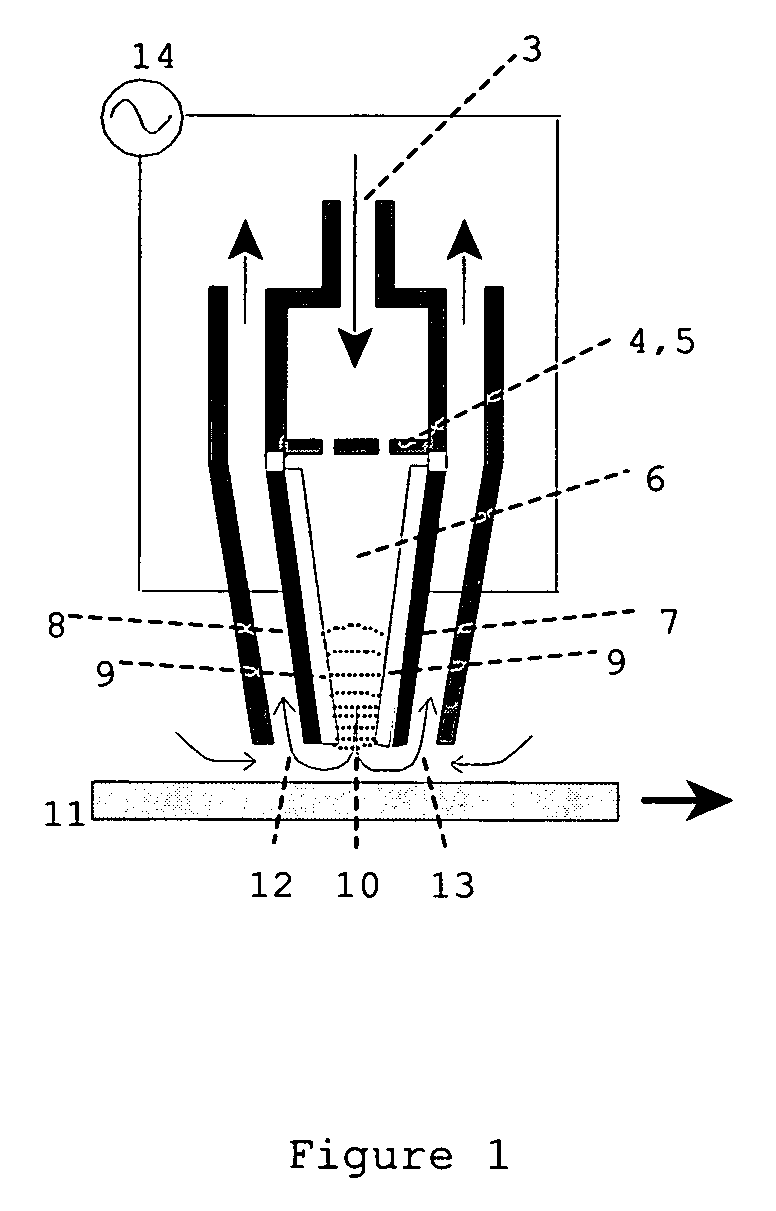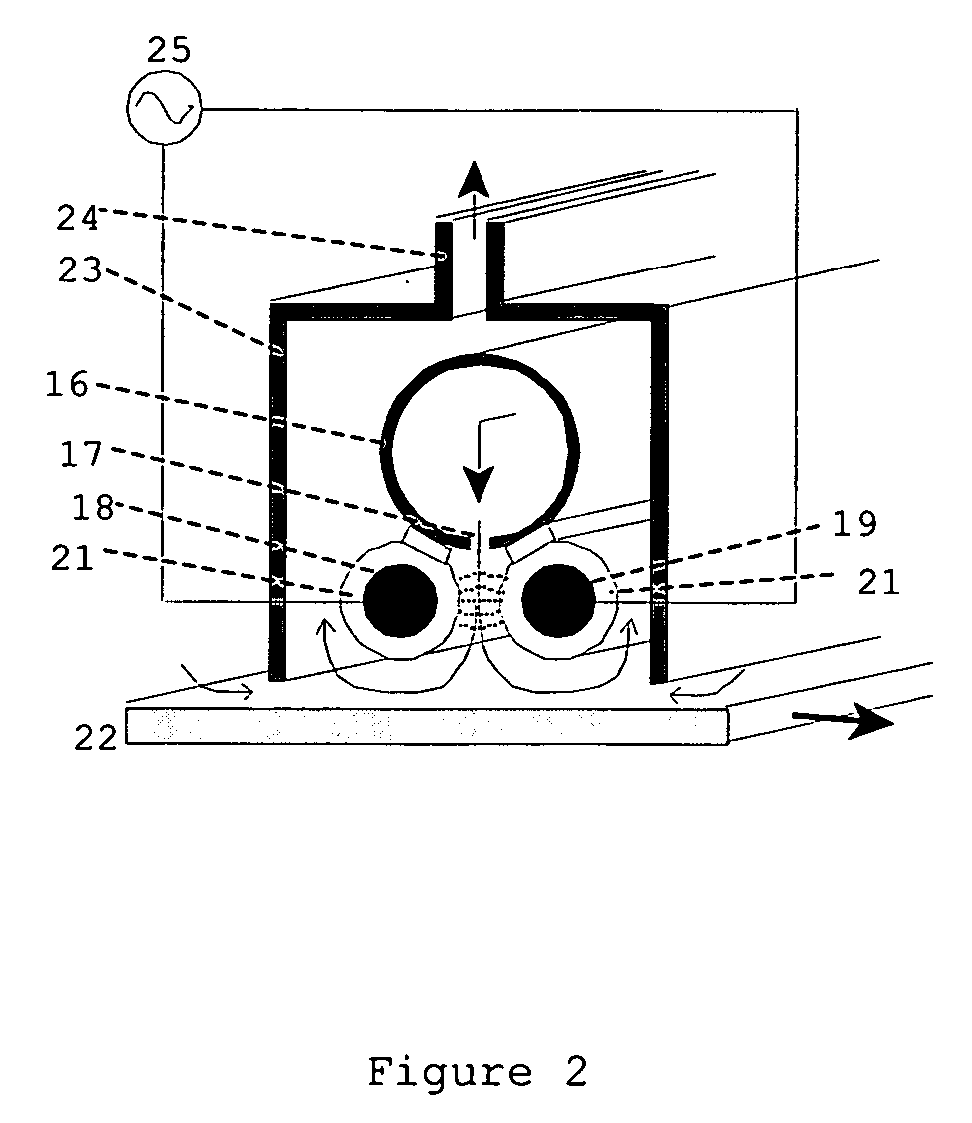Discharge-enhanced atmospheric pressure chemical vapor deposition
a technology of atmospheric pressure and chemical vapor deposition, which is applied in the direction of chemical vapor deposition coating, coating, plasma technique, etc., can solve the problems of preventing the use of cvd for surface modification or deposition, vacuum chambers and pumping systems greatly increase the cost and difficulty in scaling up for large volume manufacturing and continuous processes, and the cost of noble gases is higher. , to achieve the effect of increasing the overall process cost, the effect of reducing the cost of production
- Summary
- Abstract
- Description
- Claims
- Application Information
AI Technical Summary
Benefits of technology
Problems solved by technology
Method used
Image
Examples
example 1
SnO2 Deposition at Room Temperature (25° C.) by DECVD
DECVD System Description
[0057] The DECVD reactor used during SnO2 deposition is depicted in FIG. 4a. The reactor body was made out of nonconductive machinable alumina silicate ceramic with a dielectric strength of 100 V / mil (0.5 inch thick walls). The reactor shown in FIG. 4 was equipped with two side gas entrance slots, such as two side slots 1 and 2, and a central slot 3. Slots 1 and 2 were rectangular 0.5×7 inches. The central slot was circular 0.5 inch in diameter. To allow for adequate homogeneous distribution of gas coming from slot #3 a showerhead, #5 was introduced in the reaction stream, as shown in FIG. 4. The High voltage (HV) electrode, #4, 4 inches wide and 7 inch long was tightly fitted between ceramic walls of the ceramic reactor parallel to the substrate.
[0058] The electrode comprised of ⅛ inch in diameter 6-inch long brass rods encapsulated in Al2O3 ceramic roads as shown in FIG. 4b. When the brass electrode, ...
PUM
| Property | Measurement | Unit |
|---|---|---|
| temperature | aaaaa | aaaaa |
| surface temperature | aaaaa | aaaaa |
| temperatures | aaaaa | aaaaa |
Abstract
Description
Claims
Application Information
 Login to View More
Login to View More - R&D
- Intellectual Property
- Life Sciences
- Materials
- Tech Scout
- Unparalleled Data Quality
- Higher Quality Content
- 60% Fewer Hallucinations
Browse by: Latest US Patents, China's latest patents, Technical Efficacy Thesaurus, Application Domain, Technology Topic, Popular Technical Reports.
© 2025 PatSnap. All rights reserved.Legal|Privacy policy|Modern Slavery Act Transparency Statement|Sitemap|About US| Contact US: help@patsnap.com



